


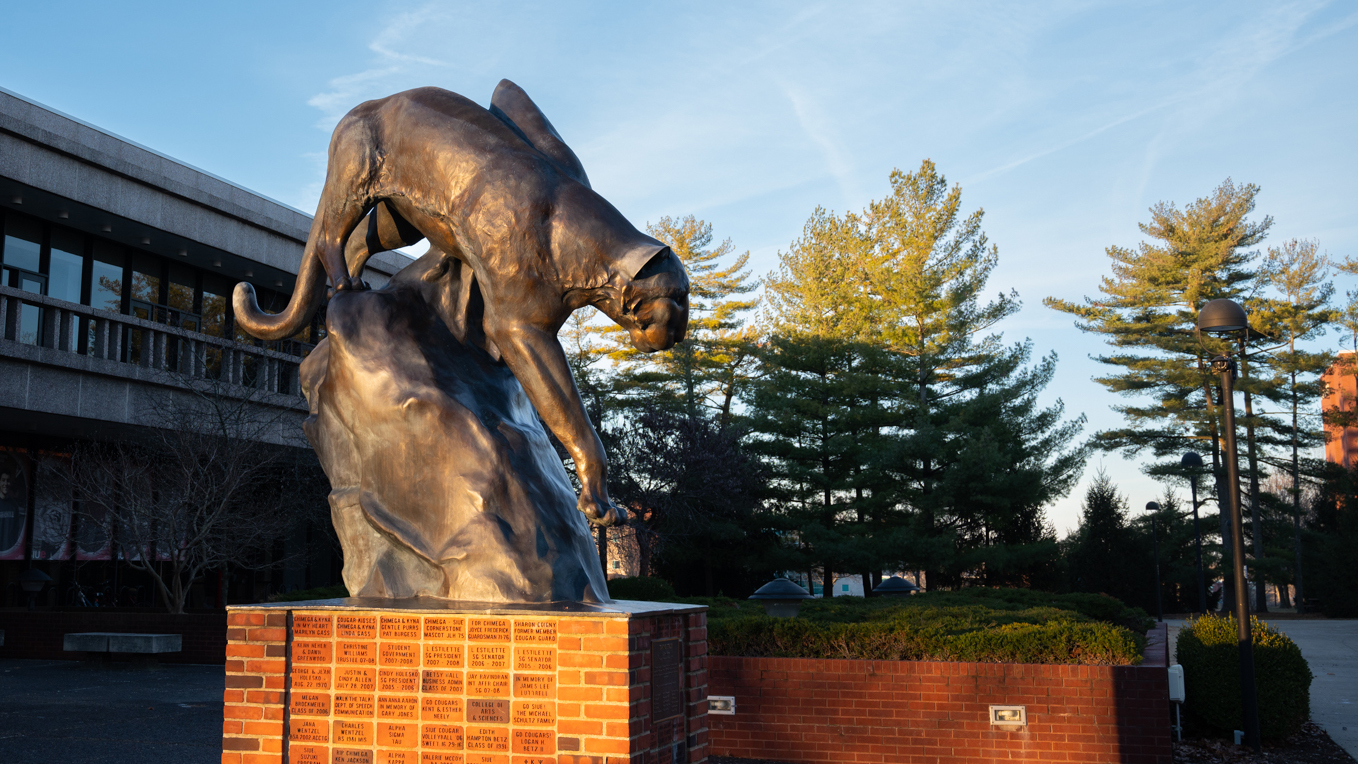
Scroll for the full story
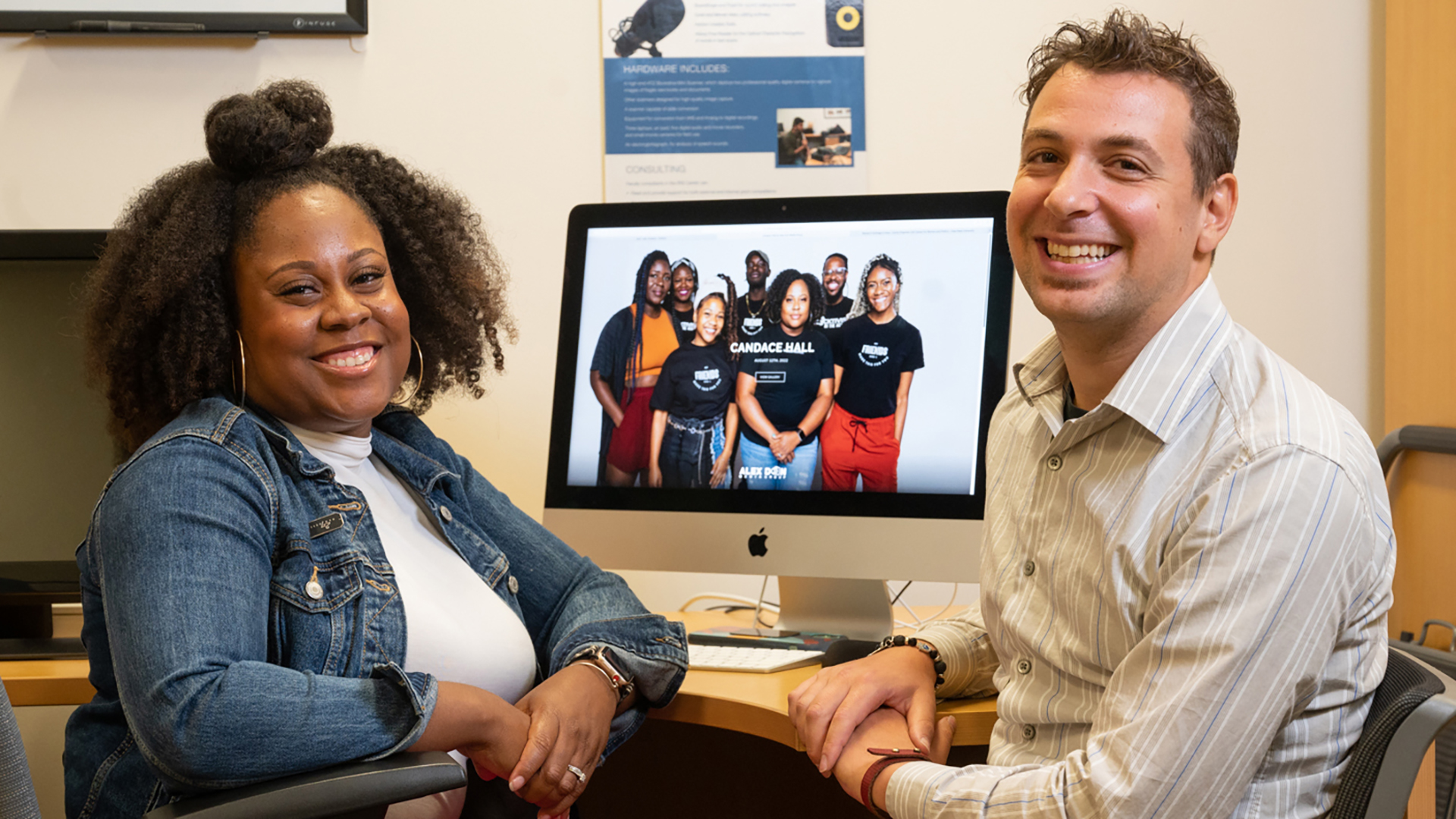
Scroll for the full story
SIUE’s Research Centers are engaged in innovative, collaborative projects both on and off campus. They provide educational offerings and offer opportunities to collaborate with our faculty and students on customized projects.
Thanks to decades of advancements in computational technology, we live in an era where it is relatively easy to collect and store data. Yet, making sense of “Big Data” is not always a simple task. The Center for Predictive Analytics is a university-wide research center that serves both the SIUE community and external partners by using and developing state-of-the-art data analysis, machine learning and data visualization techniques to mine complex data for meaningful insights and real-world applications. In addition to supporting the analytical needs of our faculty researchers and industry partners, the Center offers educational and training opportunities in data analytics and machine learning to SIUE students and regional workforce, supports student retention and intervention strategies at the campus level, and promotes the ethical use of data analytics and machine learning through workshops, seminars and conferences.
The SIUE Center for STEM Research, Education and Outreach is a collaborative enterprise among several SIUE academic units, local community colleges and school districts, regional offices of education, and the community at large. The Center’s mission is to develop, strengthen and promote STEM research, education and outreach in the region.
GeoMARC is a research center that is focused on the use of advanced technologies in Geographic Information Systems (GIS), remote sensing, digital image processing, geospatial automation, and machine learning to help solve a wide range of issues within government, private, institutional, and local communities. The center’s primary goal is to foster cross disciplinary and multi-institutional partnerships in order to develop and promote the use of geospatial technologies to conduct, lead, and influence research and innovation. In addition to research, GeoMARC is actively engaged in providing community and intra-university educational outreach for the advancement of spatial thinking and the evolving uses of geospatial technologies.
The IRIS Center at SIUE is an interdisciplinary facility designed to support individual and collaborative scholarship that applies digital content as a primary methodology. The center's mission is to facilitate cross-disciplinary projects that involve innovative uses of technology in the humanities and social sciences, support these projects with facilities, equipment, and human resources, foster active collaboration between faculty and students, encourage the development of curricular innovation that makes use of digital applications, and promote digital endeavors that intersect with community initiatives.
The NCERC is a nationally recognized research center dedicated to the development and commercialization of biofuels, specialty chemicals and other renewable compounds. The NCERC’s fully functional dry grind pilot plant and laboratories are equipped with advanced biofuels capabilities including corn fractionation, pretreatment, and a fermentation suite with 5, 30, 150 and 1500L scale-up. Facilities are staffed by industry veterans with more than 100 years of collective experience in fermentation and biofuels production. This knowledgeable team has the flexibility and expertise to design and carry out projects in any region of the advanced biofuels or specialty chemicals space.
The Center for Crime Sciences and Violence Prevention (CCSVP) contributes to crime/violence reduction efforts in the region. CCSVP promotes and develops partnerships involved with violence prevention/reduction and works with stakeholders to assist in product/program development and evaluation of crime/violence prevention efforts. CCSVP assists in improving accountability and transparency of all stakeholders in the criminal justice process and serves as a regional clearinghouse for granular criminal justice data, improving access to data across agencies, researchers, and the public.
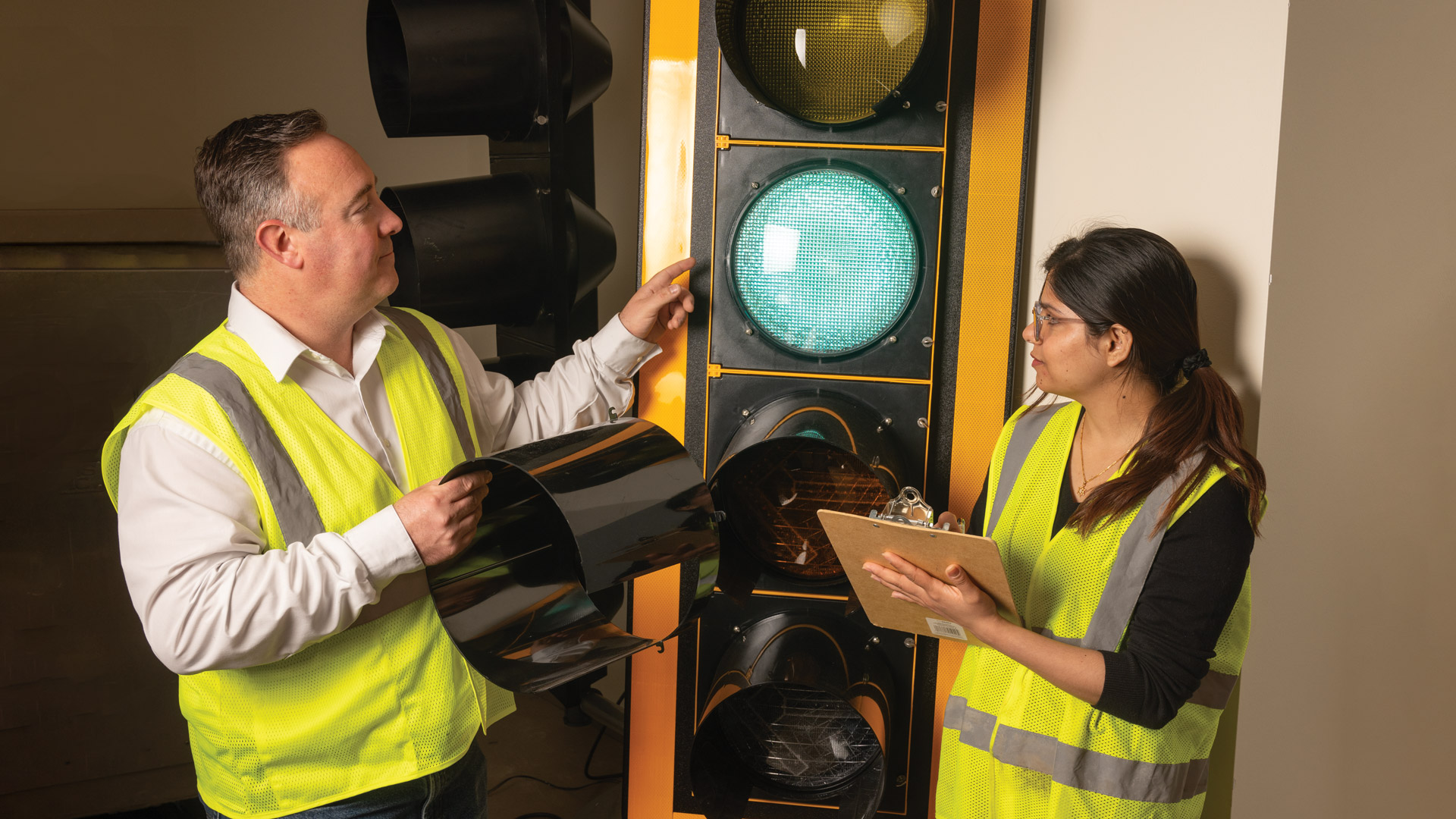
Scroll for the full story
The role of traffic signals is integral, yet often overlooked. The ubiquitous lights of red, yellow and green maintain the efficiency and flow of daily life.
Highlighting the necessity of upkeep with such an essential system, Ryan Fries, PhD, PE, professor and chair of the Department of Civil Engineering, conducted a two-year project entitled, “Optimum Traffic Signal Condition Assessment and Strategic Maintenance Planning.”
Funded by the Illinois Center for Transportation, the project aimed to identify best practices for assessing the condition of traffic signal systems to reduce unexpected failures and enhance efficiency.
“To keep these systems operating reliably and effectively, transportation agencies like the Illinois Department of Transportation (IDOT), are striving to be proactive in their management,” explained Fries. “In many cases, transportation agencies maintain traffic signals reactively, only repairing signals when they fail.”
Measuring the lifespan of components of traffic signal systems, such as the controller and the electronic device within the system that stores all the data and information for the intersection, was not possible compared to other components of the systems such as the mast arm foundations, which did have a way to assess its condition.
To be able to predict the lifespan of the controller, Fries looked at environmental factors, including average temperature and wind speeds. His research suggests that the average span of signal controllers in Illinois is seven years. Controllers in the Springfield and Collinsville areas proved to have the shortest lifespan, whereas Dixon and Ottawa have the longest.
Addressing the gap in proactive versus reactive signal maintenance will improve the safety and reliability of traffic signal systems across Illinois. IDOT and other public agencies will be able to better prioritize funding and reduce unexpected failures. At the project’s conclusion, Fries and his team built an assessment procedure for traffic signals and a guide for implementing them.
“Implementing the recommendations of this research will provide a consistent and systematic way to identify traffic signal components in poor condition and complete repairs and replacements before they unexpectedly fail during the daily commute,” Fries continued.
Fries led a team of engineering graduate students to conduct the research. Srisha Devkota, a civil engineering graduate student specializing in transportation engineering, played an important role in the project’s success, as she worked with Fries for the entirety of the research.
Fries’ work inspired Devkota to conduct her thesis as an extension of this research. Devkota’s thesis revolves around creating a method to assess the condition of the welding connection between the mast arm and signal pole of the traffic signal, working to establish a threshold year that action should be taken to repair or replace that specific part of the system.
Fries and his team’s work signifies pivotal advancement in traffic signal systems, helping pave the way for a more reliable and efficient transportation infrastructure.
*This project was supported by the U.S. Department of Transportation through the Illinois Center for Transportation as part of an award totaling $175,000, of which $131,250 are federal funds with 25% financed with nongovernmental sources. The contents are those of the author(s) and do not necessarily represent the official views of, nor an endorsement by, the U.S. Department of Transportation or the U.S. Government.

Scroll for the full story
According to the Centers for Disease Control and Prevention, the total number of U.S. overdose deaths involving commonly prescribed opioids has remained relatively consistent since a peak in 2017, despite efforts aimed at reduction. In response to the devastating opioid epidemic caused by the overprescription of pain killers, all U.S. states have implemented controlled substance prescription drug monitoring programs. The Illinois Prescription Monitoring Program (ILPMP) aims to combat problematic opioid use by monitoring prescriptions, identifying concerning drug taking behaviors by patients and prescribing behaviors among health care providers.
In the project entitled, “Development of a Composite Prescriber Reference Score for Targeted Opioid Academic Detailing,” School of Pharmacy Professor Chris Herndon, PharmD, BCACP, FASHP, FCCP, is helping the ILPMP address risky prescribing behaviors by identifying what constitutes potentially harmful prescribing patterns through the development of a comprehensive risk, or reference score like a grading scale.
“We aim to create a single, validated risk score in which to identify prescribers of opioids for referral for academic detailing,” said Herndon. “We hope to be able to quickly identify and educate providers on the safe prescribing and monitoring of opioids.”
Existing scoring systems are based on peer prescriber comparisons. Scores are based on the prescriber who had the most patients on opioids, or the highest prescriber based on the type of provider. These scoring systems do not show negative patient outcomes, however, leaving the system unvalidated.
“As a member of the ILPMP peer review committee, we regularly review the opioid prescribing data in Illinois,” Herndon continued. “Considering the sheer amount of data we review; it becomes an incredibly arduous task to identify risky prescribing or prescribing outside currently accepted medical practice. Thus, one score would make identifying the most concerning prescribing patterns much easier.”
Adam Schulte, PharmD, 2017, helped Herndon create the coding for the score. Carrie Butts-Wilmsmeyer, assistant professor in the Department of Biological Sciences and director of the Center for Predictive Analytics, is assisting with the current phase of the project’s validation efforts. By correlating the reference scores with actual rates of opioid overdose and opioid overdose-related deaths, Herndon and his colleagues hope the validation of the reference score will improve the reception of academic detailing when offered to prescribers.
As part of the project’s final step, current PharmD students will have the opportunity to learn how to use predictive modeling to identify individuals at risk of transitioning from prescribed opioids to illicit substances.
“Discussing these prescribing patterns and concerns within our PharmD curriculum gives our students a real-world glimpse into their role in minimizing opioid related overdoses and death as well as to begin considering what they, as future pharmacists, should consider risky or unsafe opioid prescribing,” Herndon said.
*This project was supported by the Harold Rogers Prescription Drug Monitoring Program, a program that supports state and local governments in detecting and preventing the diversion and misuse of pharmaceutically controlled substances such as opioids and other prescription drugs.
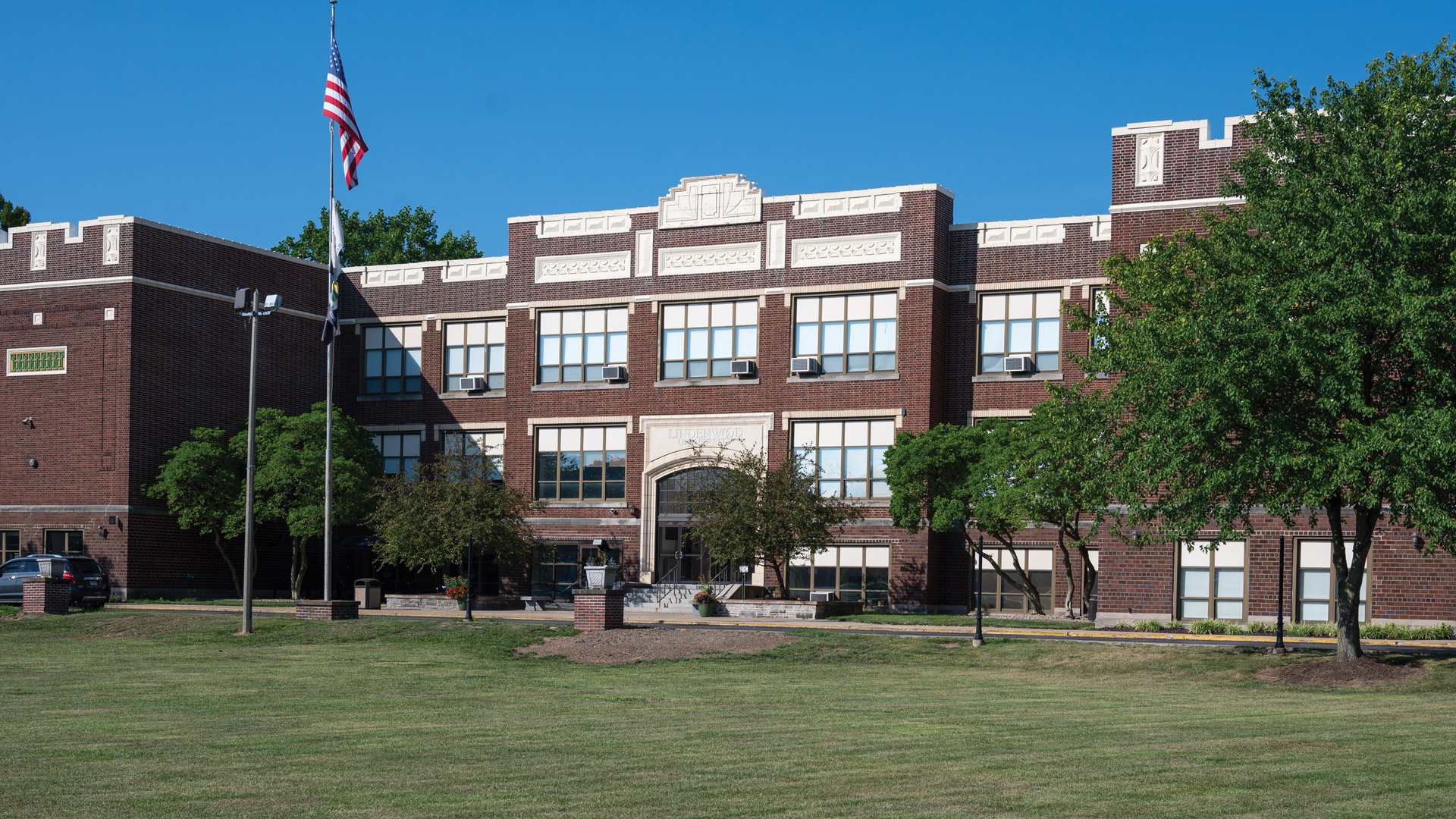
Scroll for the full story
SIUE’s Center for Crime Science and Violence Prevention (CCSVP) at the Southwestern Illinois Justice and Workforce Development Center in Belleville, Ill., represents a first in the region for its focus on strengthening evidence-based practices in criminal justice.
The primary focus of the CCSVP is to assist all stakeholders in the criminal justice field in their efforts to reduce crime. The CCSVP has developed partnerships with regional agencies and organizations to provide a range of services, including grant development, data analytics, crime analysis, mapping, evaluation, research and more.
“SIUE has always been community focused, and we want to carry that torch at CCSVP and provide added value to our region,” said Dennis Mares, PhD, interim director of the CCSVP and professor in the SIUE Department of Criminal Justice. “The success of the CCSVP will translate into more opportunities for our students, staff and faculty to be involved in research, publications and relationships with the community at large. Given how large a topic public safety has always been, the Center will create a lot of opportunities for SIUE to communicate to the public and become a leader in the region.”
Mares is leading several projects through the CCSVP that aim to reduce crime in the surrounding communities.
“My recent research has focused on the intersection of policing and technology, especially the impact of technology on crime prevention and investigative work,” said Mares. “While some people may object to more surveillance technology, my view is that such technologies also have the potential to make things fairer and contribute to more equitable policing.”
He notes that although the results from the projects may not always lead to definitive conclusions, it is learning and applying best practices while abandoning ineffective approaches that is the most crucial part of the projects.
“Achieving lasting crime reductions is not the typical outcome in our line of work, but that doesn’t mean we didn’t learn something new or practically relevant,” Mares said. “Figuring out the contexts in which innovations and technology may work will be an important part of moving crime prevention forward.”
As the CCSVP continues to become more established, SIUE students will have more opportunities to gain hands-on experience and play a key role in the transformation of crime prevention in the region.
Dennis Mares, PhD, interim director of the CCSVP and professor in the SIUE Department of Criminal Justice is actively working with police departments and counties served by the CCSVP to reduce crime in the surrounding communities.
Mares and the CCSVP helped the Alton Police Department (PD) obtain an $800,000 grant in fall 2023 to fund new technologies including license plate readers, cameras and other surveillance tools to help prevent crime and hold offenders accountable. Through the project, the CCSVP will assist Alton PD to establish a real-time crime center and develop a crime analysis portal that brings mapping capacity to the city and expands its commitment to public transparency. The CCSVP will also be involved in the final evaluation of the technology upgrades.
The project is currently in its start-up phase, and Mares is working with Alton PD to develop a specific action plan that will provide greater detail to the implementation process and create ways for the community to provide input. Final project results will include details about crime and policing changes resulting from these efforts and are expected to be released near the end of the project period in 2026.
*This project is supported by the U.S. Department of Justice through the Alton Police Department as part of an award totaling $800,000. The contents are those of the author(s) and do not necessarily represent the official views of, nor an endorsement by, the U.S. Department of Justice or the U.S. Government.
The Collinsville Police Department (PD) started working with the CCVSP in fall 2023 to improve investigative outcomes by expanding license plate reader technology and cell phone forensic software. The CCVSP will provide technical assistance, analysis of ongoing data collection, and the final evaluation detailing the impact on crime and investigative outcomes after the project concludes in September 2026. Collinsville PD is working with vendors to acquire the technological upgrades. Once received, they will continue working with CCSVP on best practices and determining optimal technology placement.
*This project is supported by the U.S. Department of Justice through the Collinsville Police Department as part of an award totaling nearly $300,000. The contents are those of the author(s) and do not necessarily represent the official views of, nor an endorsement by, the U.S. Department of Justice or the U.S. Government.
With a start date of October 2021, this project focuses on implementing body worn cameras across two law enforcement jurisdictions in St. Clair and Madison counties. Recognizing the need for greater police accountability, East St. Louis Alton police departments applied for funding to prepare for the Illinois state mandate that will require body-worn cameras for all agencies in the state. Alton and East St. Louis have since acquired and deployed the cameras. CCSVP will provide the evaluation for the project and has collected survey data from police officers and the public about their views of the cameras which indicated wide-spread support for the program. In addition, use-of-force statistics of both agencies will be examined to determine if the cameras have an impact on use of force and complaints against officers.
*This project is supported by the U.S. Department of Justice through the Alton and East St. Louis Police Departments as part of an award of more than $225,000. The contents are those of the author(s) and do not necessarily represent the official views of, nor an endorsement by, the U.S. Department of Justice or the U.S. Government.
Visit siue.edu/ccvsp for more information and project results.
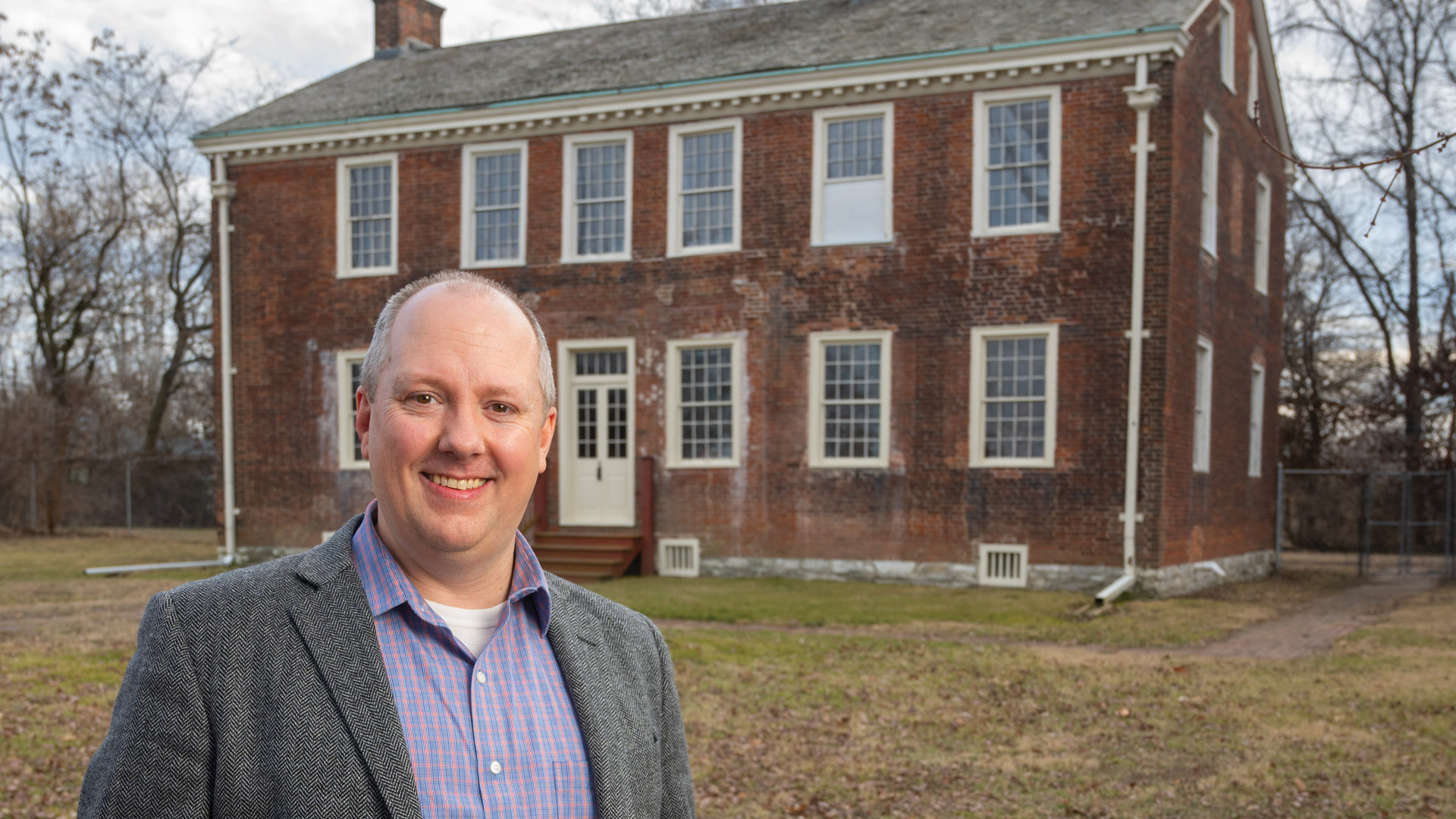
Scroll for the full story
Seeking new opportunities, Nicholas Jarrot (1764–1820), a wealthy entrepreneur and landowner, immigrated to the United States from France in 1790. His journey led him to settle in 1793 in the Cahokia Heights area where he constructed a homestead between 1807 and 1810. Known as the Nicholas Jarrot Mansion, the homestead is on the National Register of Historic Places. Jarrot reportedly owned over 25,000 acres between Illinois and Missouri and was involved in enslavement in an area where slavery was prohibited by law.
The history of Jarrot’s legacy has yet to be fully uncovered, leaving many unanswered questions.
The Jarrot Mansion Project, Inc., a non-profit organization dedicated to supporting and interpreting the Nicholas Jarrot Mansion, reached out to SIUE’s Department of History asking for help to uncover the unknowns surrounding Jarrot and his landholdings. Erik Alexander, PhD, associate professor, was tasked to lead the project.
“The site of the Jarrot Mansion is a really unique place, and it challenges a lot of our preconceived ideas about American history,” Alexander explained. “It is an incredibly rich site to tell these stories that historians have been developing over the past several decades.”
Alexander, alongside Robert Paulett, PhD, associate professor, and doctoral student Emily Eckles, are working to document and map the extent of Jarrot’s landholdings at the peak of his career thanks to the support and funding provided by the Jarrot Mansion Project, Inc.
Over 18 months, the group will identify surviving land records in local and regional archives, explore those records, and begin to document Jarrot’s landholdings. The last step will be to transfer the records and create digital maps of the documented information. While it is not the focus of the project, Alexander hopes the research can reveal important historical aspects of Jarrot’s life, including his involvement in enslavement.
“We hope to be able to shed light on the history of slavery in areas where slavery was supposedly outlawed,” said Alexander. “In fact, after Jarrot’s death, one of the people he held in bondage eventually sued for their freedom in a well-known 1845 Illinois Supreme Court case that ultimately clarified and ended the practice of indentured servitude in the state. We think this project can tell us a lot about that history, which is still not very well known.”
The team has uncovered many interesting facts including that Jarrot owned land that is where the Cahokia Mounds State Historic Site now stands. He gifted the land to Trappist monks who named the large central mound “Monks Mound.” They also discovered that Jarrot held property on the Mississippi waterfront near Wood River, which is also known as the mystery town of St. Mary’s. The town’s location is unknown, but the land was possibly connected to a camp that was part of the Lmaewis and Clark expedition.
Alexander considers the work to highlight Jarrot, the mansion and his landholdings a unique opportunity to bridge the gap between history and the present. He hopes that through this project he can do just that.
“At SIUE, where so many of our students come from the region and local community, connecting our local past with the present helps our students to see the importance, and take ownership, of that history. A site like the Jarrot Mansion provides that opportunity in a unique way,” Alexander said.

Scroll for the full story
Southern Illinois University School of Dental Medicine’s (SIU SDM) Nathalia Garcia, DDS, is equipping the next generation of women in dentistry with the confidence and leadership necessary to excel in the oral health industry. Garcia was one of the faculty representatives involved in initiating and designing the national program, “Empowering Women in Dental Education.”
Funded by the ADEAGies Foundation, the philanthropic arm of the American Dental Education Association, the program caters to female oral health education students across the country in their final year of study. Along with associate professors Karin Quick, PhD, DDS, and Michelle Brady, DDS, Garcia led the collaborative faculty team, all of whom are Enid Neidle Scholars affiliated with the American Dental Education Association.
“The objective of this educational program is to create, implement and assess a curriculum aimed at fostering leadership, confidence, professionalism, relationship-building, cultural competency and various non-technical skills among senior women students in oral health professions,” said Garcia. “The curriculum is strategically crafted to cultivate skills beyond dental technicalities encompassing areas such as business intelligence, leadership and networking, among others, among our female students before they enter the workforce.”
As the primary institution, SIUE hosted the inaugural online interactive workshop in January 2024. The program continued into 2024, offering different iterations of the workshop through other institutions. Attendees of the inaugural session were introduced to women from diverse backgrounds who have excelled as professionals and leaders in their respective industries.
“The program was a great opportunity to learn more about self-confidence and leadership in the workplace,” said SIU SDM fourth-year student Rebecca Da Fonte of Brazil. “It was enriching to connect with a diverse group of women pursuing various career paths, fostering a sense of camaraderie and shared learning experiences.”
Topics included the voice of a woman; leadership and emotional intelligence; power and wellbeing; and diversity, equity, inclusion and belonging.
“The program consisted of several accomplished speakers who discussed strategies and emphasized the importance of having a diverse skill set of academic, leadership, and personal skills to succeed and become influential in the workplace,” said second-year implant fellow Kelly Cusack, DMD. “These skills and strategies help women to confidently enter the workplace and are generally not found in the traditional dental curriculum.”
“I firmly believe that this program aligns seamlessly with the mission and vision of our institution,” Garcia continued. “It catalyzes empowering our students to realize their utmost potential and emerge as influential leaders prepared to shape a dynamic world. Furthermore, it creates invaluable avenues for facilitating access to both personal and professional development opportunities.”
*Empowering Women in Dental Education: A project to prepare women oral health professions students for succeeding in the workplace initiative has been made possible through grant funding allocated by the ADEAGies Foundation. Raising awareness in dental education and the dental profession of this funding and its impact is essential to ensure continued support of oral health initiatives which advance dental education and the dental profession.
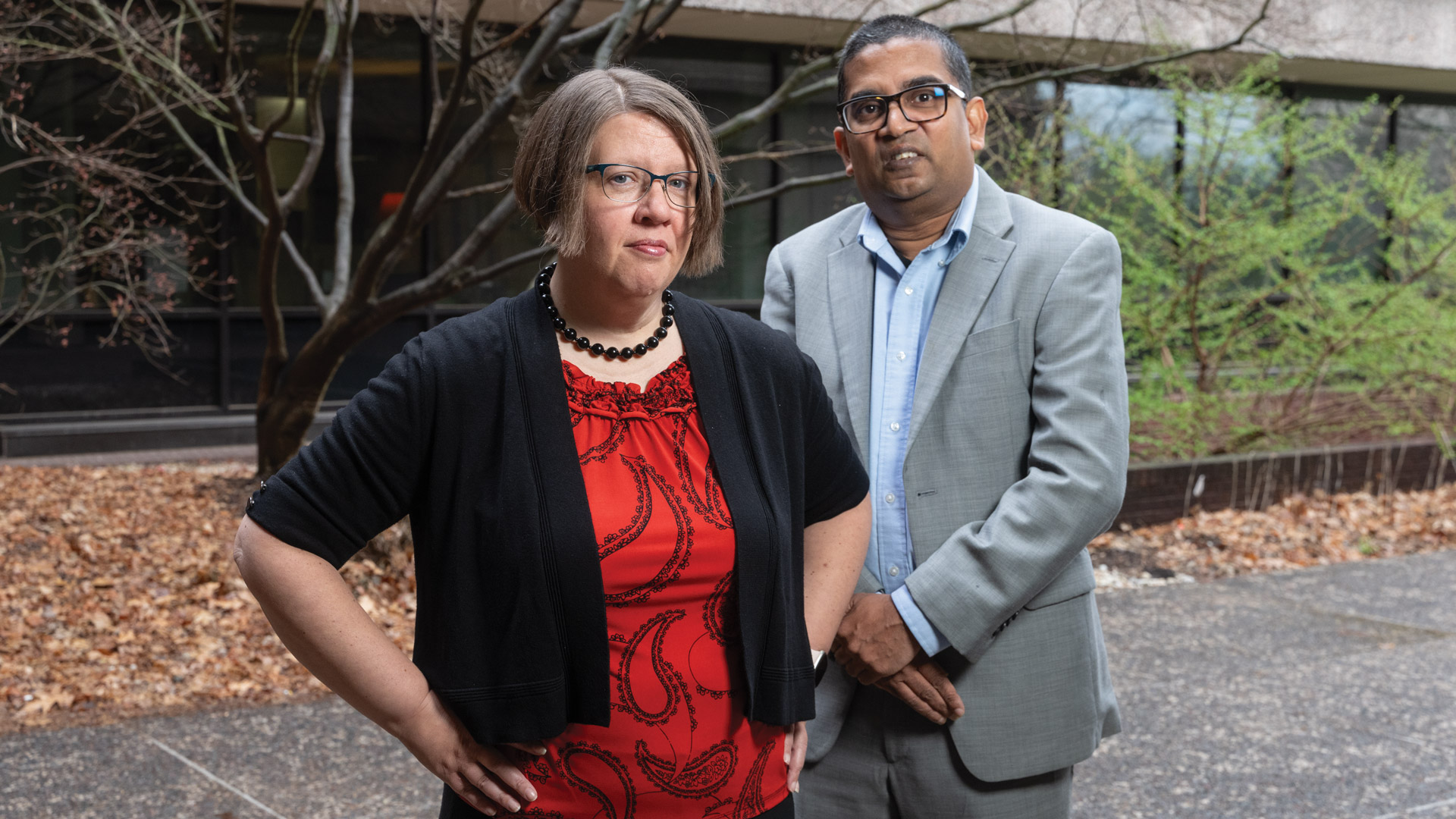
Scroll for the full story
Domestic violent extremism is the most consequential security threat facing the U.S. according to the Department of Homeland Security, Department of Justice and Federal Bureau of Investigations. There is increasing agreement that local communities are the first line of defense to combat the increasing threat.
Department of Political Science faculty Suranjan Weeraratne, PhD, associate professor and Laurie Rice, PhD, professor, developed the project, “Enhancing Local Capacity to Prevent Targeted Violence in Southern Illinois,” to provide a framework for preventing targeted violence and domestic terrorism in 41 counties throughout Southern Illinois.
“This topic is particularly important now because the U.S. is facing a growing threat of lone wolf actors motivated by a variety of ideologies and grievances,” said Rice. “Mass attacks, targeted violence and domestic terrorism related incidents have all grown significantly over the last decade or so. Given the current highly polarized political environment and the prevalence of online extremism, this threat is likely to grow unless communities act to build preventative factors and work to reduce risk factors.”
The first phase of the project included surveys conducted in 2023 that assessed the community prevalence of extremist attitudes, support for violence and risk factors for terrorism.
According to Rice, surveys they fielded in 41 counties in Southern Illinois asked respondents to agree or disagree with the following: Violence is justifiable to achieve partisan or ideological objectives.
Results from the survey also showed that multiple risk factors associated with support for violence are significantly higher in Southern Illinois than nationally. Individuals in Southern Illinois expressed greater difficulty achieving their life goals, and adults who have experienced being bullied had higher levels of support for threats and violence compared to national averages.
The project’s second phase involved informational sessions presented to local community members, college students and law enforcement covering the main findings of the data. Future plans include:
“We hope the data-driven conversations we initiated in various training sessions lead to the development of effective community prevention strategies,” said Rice.
“Armed with this knowledge and increased cognizance, it is our hope the local community will work proactively with law enforcement and other relevant stakeholders to effectively address the threats of radicalization and domestic terrorism, thereby providing a critical bulwark support in the fight against violent extremism,” Weeraratne added.
*This project was supported by the U.S. Department of Homeland Security as part of an award totaling $332,491, of which $332,491 are federal funds with 0% financed with nongovernmental sources. The contents are those of the author(s) and do not necessarily represent the official views of, nor an endorsement by, the U.S. Department of Homeland Security or the U.S. Government.
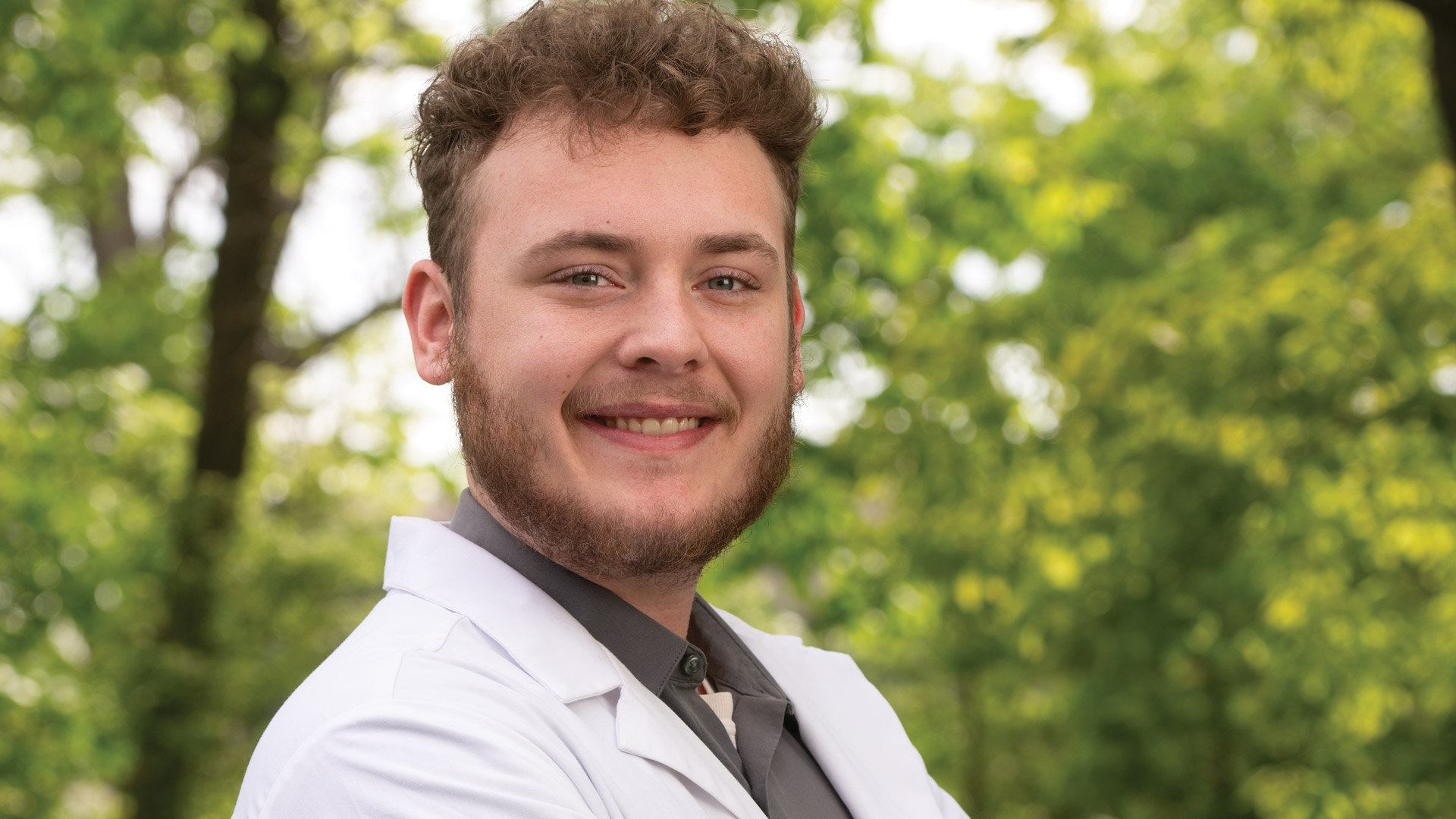
Scroll for the full story
The bond between an athlete and coach is unique—it’s a relationship built on mutual trust. The impact a coach has on an athlete’s performance and development is instrumental. But can a coach constrain an athlete too much and limit the athlete’s abilities? When a decision needs to be made on the field of play, will an athlete rely on what they see in action or what they are told by their coach to make the decision?
Mariano Rayon, an exercise and sport psychology graduate student, was curious about the lack of research regarding the correlation between athlete creativity, as measured by divergent thinking, and coach leadership behavior. So, he gathered data from various coaches and athletes across the NCAA to explore the topic.
“My research assesses how a coach’s training, instruction methods, autocratic behavior, democratic behavior, social support and positive feedback influence an athlete’s creative abilities,” Rayon explained.
He used the Alternative Uses Test, a creativity test used to assess an individual’s flexibility of thinking, as the base measure for the research. He hypothesizes that the higher an athlete scores their coach on the leadership assessment, except autocratic behavior, the higher the creative scores of the athletes on the Alternative Uses Test.
“Understanding the correlation between an athlete’s creative abilities and a coach’s leadership behavior could significantly impact the choices coaches make when it comes to practice design and player interaction.”
“Often in sport, we see practices run with very little room for athletes to be creative or try out new things,” said Rayon’s advisor Lindsay Ross-Stewart, PhD, CMPC, MPC, associate professor in the Department of Applied Health. “This is even though in games athletes are expected to be confident making decisions without constant coach instruction.
“Rayon’s research will add to the literature on the importance of creativity for athlete success and the role of the coach in helping this happen through more democratic, and autonomy supportive means.”
Blake Rentz got a head start on his graduate research project through SIUE’s unique Undergraduate Research and Creative Activities (URCA) program. URCA lets students work closely with faculty on research projects in formats typically only available to graduate students.
Rentz earned a BS in environmental sciences in May 2024. Enrolling in an accelerated combined degree program meant he had already earned credit toward a graduate degree and could continue and expand on his URCA research project as a graduate student. Rentz is working toward a Master of Science in environmental sciences with a specialization in environmental chemistry and toxicology.
Rentz’s research focuses on the characterization of a dichlorodiphenyltrichloroethane (DDT)-resistant fruit fly strain. Since there is little knowledge of the key mechanisms that give these pests the ability to resist and survive insecticides, his work compares the DDT–resistant strain to other fruit fly strains to find out if the resistant strain has any fitness disadvantage.
“I hope my research will help further the knowledge present in the field of toxicology by highlighting the relationship between insecticide resistance and fitness disadvantages in resistant insects,” said Rentz.
Rentz is analyzing various life history parameters of the fruit fly, including developmental time, adult longevity and fertility, and the impact of different nutritional conditions to assess if the resistant flies have a fitness disadvantage in comparison to the susceptible flies.
Rentz will additionally conduct bioassays, a test to understand the toxicity of a compound towards an organism, to determine whether the DDT-resistant flies have cross-resistance to other insecticides.
“We hope that Blake’s research will help us to better understand insecticide resistance in the fruit fly and provide a foundation for future research,” said Kyong Sup Yoon, PhD, associate professor in the Department of Environmental Sciences “A better understanding of insecticide resistance helps to promote improved pest management strategies to ensure the efficient and effective control of pests.”
Rentz is in the project’s beginning phases and aims to complete the study during the spring 2025 semester.
Natasha Israt Kabir, sociology graduate student, intends to contribute to the current knowledge on trafficking in the commercial sex industry.
“Trafficking in the commercial sex industry threatens the lives of people all around the world, including Bangladeshi survivors who have been transported to India and the Middle East,” said Kabir. “I am looking at the resistance of Bangladeshi survivors of commercial sex trafficking, with a substantial shed of light on the backdrop of poverty in their victimization and how social media is playing a critical role.”
According to Kabir, existing research on this topic shows that poverty and other socioeconomic factors increase an individual’s susceptibility to trafficking. Furthermore, individuals who experience poverty, inadequate education and insufficient employment opportunities are more vulnerable to manipulation and trafficking through the avenue of social media.
Kabir’s methodology includes reviewing literature that covers human trafficking, the needs of victims of human trafficking, the services in place to help these victims and the aspects missing from these services. Narrative accounts of Bangladeshi survivors of commercial sex trafficking, as well as the NGOs and associations who support them after they return to their home country, will be collected. The following questions will be addressed:
“My goal is to add substantial value for both researchers and relevant communities and movements in India and Bangladesh, while also contributing to global research on sexual abuse survivors, including gender and ethnographic inequalities,” Kabir said.
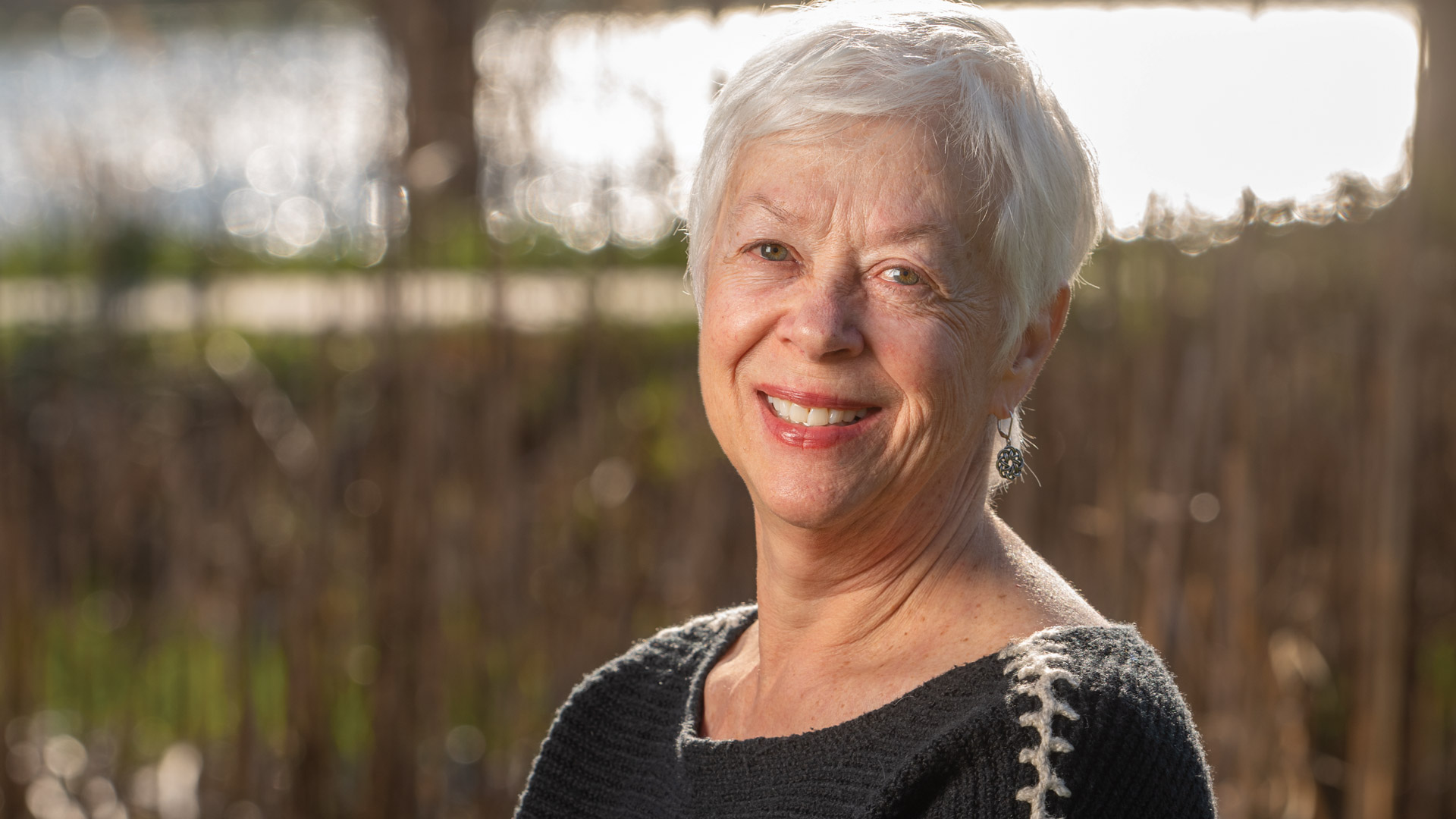
Scroll for the full story
n my most recent book of poems, The Visible Woman, I explore a subject I care deeply about—the often-endangered bodies of women. A poem that conveys this interest is “Murmurations,” in which I compare young women doing what we used to call “water ballet” to the beautiful shape-shifting aerial dance that starlings are known for. The birds find safety in numbers by sticking together. In the thousands they create mesmerizing, swirling forms that help them evade predators. I imagine something like that for women—finding strength in solidarity with one another.
Murmurations
Moving as one body,
the way girls in matching suits
and caps practice figures in a pool,
holding hands, kicking in unison
to create a flower or eight-pointed star,
flocks of starlings synchronize in the air,
clouds of them morphing as they veer
and dip and weave, wing-swimming,
though not for sport. Rather
to escape a threatening falcon or hawk.
Don’t underestimate them as some do
beautiful women.
In seconds they can change direction.
Swarm. Become a mass
that renders a predator helpless.
My current project is a volume of new and selected poems supported by a recent fellowship I was awarded from the John Simon Guggenheim Memorial Foundation. The first poems I wrote for this book were inspired by the Watershed Nature Center in Edwardsville, a place I love and spent a lot of time in during the height of Covid. I would visit this nature preserve and walk the paths there from season to season, noting the changes in plant and animal life. Much of the Watershed is made up of wetlands, which led me to think about marshes, bogs, and swamps—those liminal places that are not entirely earth or water. I associate them with the changeability of human lives. We are so often in-between, in transition from one phase of our lives to another. I explore grief especially: what life is like in the aftermath of a loved one’s death.
Since my retirement from teaching in 2017 I have had the time to travel and to conduct the research my poems sometimes demand. Last May I went to Ireland at the invitation of the Tyrone Guthrie Centre, a residence for writers and artists, where I explored boglands. I am no scholar, but I often undertake a creative writer’s kind of research that happens for me in nature, in museums, on the road, and in books. In the process I learn more about the world outside of the one I may imagine. Doing this, I find that “outside” and “inside” often meet, even merge to suggest a connection that becomes metaphorical. My poems start there.

Scroll for the full story
An Interfaith America Advancing Campus Pluralism
Grant is supporting SIUE’s continued efforts to enhance pluralism and cooperation across deep differences on campus. To align with its request for proposals, Interfaith America sought campus partners “who recognize that American colleges and universities have a unique role and responsibility to help our communities and our nation explore and learn how to bridge divides while maintaining a common life together.”
During the one-year grant period, Jessica Harris, PhD, Vice Chancellor for Anti-racism, Diversity, Equity, and Inclusion; J.T. Snipes, PhD, associate professor and chair in the Department of Educational Leadership; Matthew Schunke, PhD, professor of philosophy; Lindy Wagner, Assistant Vice Chancellor for Inclusive Excellence, Education and Development; and two students, Stella Smith and Nicholas Young, will develop a curricular and co-curricular general education pathway for students, focused on pluralism.
Jie Dong, PhD, associate professor in the Department of Chemistry, and fermentation scientist at the National Corn-to-Ethanol Research Center (NERC) at SIUE, is among the “2024 Researchers to Know,” according to the Illinois Science & Technology Coalition. The annual list highlights the groundbreaking research being done on Illinois’ campuses and provides a detailed look at some of the researchers that are driving innovation in the state.
Dong works on multiple projects with private companies to promote bioprocess and biomanufacturer research at SIUE. Since 2021, he has received more than $1.2 million in federal grants and has helped secure research contracts from the industry. He has established ongoing collaborations with multiple universities and national labs.
Geovonday Jones, assistant professor of performance in the Department of Theater and Dance, starred in The Black Rep’s theatre production of August Wilson’s “King Hedley II” at The Edison Theatre in St. Louis. This play is the ninth installment in playwright Wilson’s renowned American Century Cycle of 10 plays about the Black Experience. Prior to this role, Jones directed the play “Wedding Band.”
The Black Rep, a 46-year-old legacy Black arts organization, is committed to producing, re-imagining and commissioning work written by Black playwrights and creating opportunities for new voices and youth.
School of Dental Medicine (SIU SDM) faculty member and alumnus participated in the development of a new over the counter treatment for cold sores, minor cuts, minor burns and insect bites. Alan Wickenhauser, DMD, assistant professor in the Department of Clinical Dentistry and SIU SDM class of ‘98, is a member of the team responsible for a new product in the cold sore industry, Helocaine®.
“Helocaine® is built on years of research and collaboration amongst several excellent scientists and medical professionals. These efforts have shaped the development and launch of a transformative product,” said Wickenhauser.
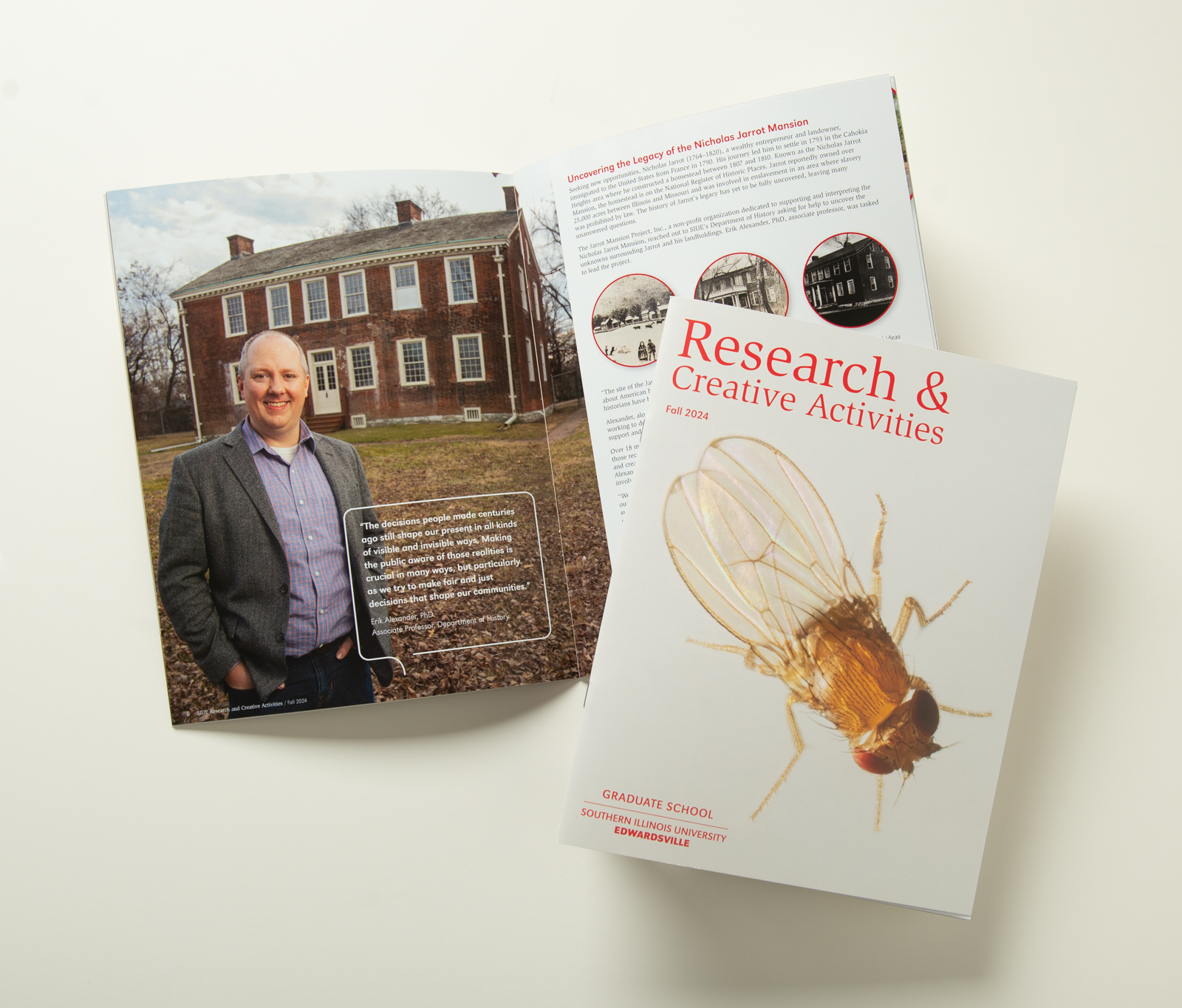
Scroll for the full story
Research and Creative Activities magazine brings to life faculty scholarship at SIUE, offering an inside look in a range of disciplines, from sculpture and science to economics and engineering.
Email address: siueresearch@siue.edu
UCDA Design Awards
Educational Advertising Awards
Collegiate Advertising Awards
Research & Creative Activities 23rd Edition [pdf]
Research & Creative Activities 20th Edition [pdf]
Research & Creative Activities 19th Edition
Research & Creative Activities 18th Edition
Research & Creative Activities 17th Edition
Research & Creative Activities 16th Edition
Research & Creative Activities 15th Edition

Scroll for the full story